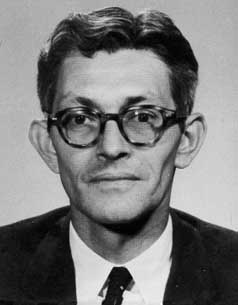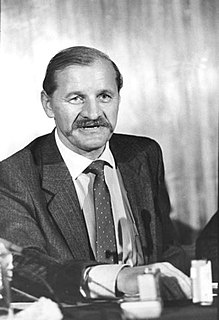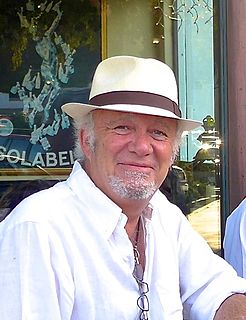
Robert Philip Hanssen is an American former Federal Bureau of Investigation (FBI) double agent who spied for Soviet and Russian intelligence services against the United States from 1979 to 2001. His espionage was described by the Department of Justice as "possibly the worst intelligence disaster in U.S. history." Hanssen is currently serving 15 consecutive life sentences without parole at ADX Florence, a federal supermax prison near Florence, Colorado.

Aldrich Hazen "Rick" Ames is a former Central Intelligence Agency (CIA) officer turned KGB double agent, who was convicted of espionage in 1994. He is serving a life sentence, without the possibility of parole, in the Federal Correctional Institution in Terre Haute, Indiana, United States. Ames was formerly a 31-year CIA counterintelligence officer who committed espionage against the U.S. by spying for the Soviet Union and Russia. At the time of his arrest, Ames had compromised more highly classified CIA assets than any other officer in history until Robert Hanssen's arrest seven years later in 2001.

Counterintelligence is an activity aimed at protecting an agency's intelligence program from an opposition's intelligence service. It includes gathering information and conducting activities to prevent espionage, sabotage, assassinations or other intelligence activities conducted by, for, or on behalf of foreign powers, organizations or persons.

James Jesus Angleton was chief of counterintelligence for the Central Intelligence Agency (CIA) from 1954 to 1974. His official position within the organization was Associate Deputy Director of Operations for Counterintelligence (ADDOCI). Angleton was significantly involved in the US response to the purported KGB defectors Anatoliy Golitsyn and Yuri Nosenko. Angleton later became convinced the CIA harbored a high-ranking mole, and engaged in an intensive search. Whether this was a highly destructive witch hunt or appropriate caution vindicated by later moles remains a subject of intense historical debate.
Karel František Koecher is a mole known to have penetrated the CIA.

The Bureau of Diplomatic Security, commonly known as Diplomatic Security (DS), is the security branch of the United States Department of State. It conducts international investigations, threat analysis, cyber security, counterterrorism, and protection of people, property, and information. Its mission is to provide a safe and secure environment for officials to carry out U.S. foreign policy.

Edward Lee Victor Howard was a CIA case officer who defected to the Soviet Union.

Vitaly Sergeyevich Yurchenko is a former high-ranking KGB disinformation officer in the Soviet Union. After 25 years of service in the KGB, he defected to the United States during an assignment in Rome. After providing the names of two U.S. intelligence officers as KGB agents and claiming that Lee Harvey Oswald was never recruited by the KGB, Yurchenko slipped from the Americans and returned to the Soviets. It is clear that his initial defection was illegitimate, because Yurchenko was awarded the Order of the Red Star from the Soviet government for the successful "infiltration operation."

The FBI's Ten Most Wanted Fugitives during the 2000s is a list, maintained for a sixth decade, of the Ten Most Wanted Fugitives of the United States Federal Bureau of Investigation. At any given time, the FBI is actively searching for 12,000 fugitives. During the 2000s, 36 new fugitives were added to the list. By the close of the decade a total of 494 fugitives had been listed on the Top Ten list, of whom 463 have been captured or located.
Yuri Ivanovich Nosenko was a KGB officer who defected to the United States in 1964. Controversy arose in the CIA over whether he was a bona fide defector and he was held in detention for over three years before he was finally accepted as a legitimate defector by the CIA. After his release, he became an American citizen, working as a consultant and trainer for the CIA.
William King Harvey was a Central Intelligence Agency officer, best known for his role in Operation Mongoose. He was known as "America's James Bond", a tag given to him by Edward Lansdale.
Espionage and secret operations have long been a source of fiction, and the real and perceived U.S. Central Intelligence Agency (CIA) is a source of many books, films and video games. Some fiction may be historically based, or will refer to less action-oriented aspects, such as intelligence analysis or counterintelligence.
The American media referred to 1985 as the Year of the Spy because law enforcement arrested many foreign spies operating on American soil. However, the preceding year, 1984, actually had more arrests for espionage in the United States.
CIA involvement in Hungary from 1950-1957 and again in 1989 consisted of clandestine intelligence collection, gray psychological operations, and counterintelligence activities. As noted in the book Broadcasting Freedom: The Cold War Triumph of Radio Free Europe and Radio Liberty, an organization called Radio Free Europe (RFE), was funded at the time by the CIA to broadcast Hungary from at least from 1950 to 1956. However, RFE operated on no directives to foment revolution.
The CIA Kennedy assassination theory is a prominent John F. Kennedy assassination conspiracy theory. According to ABC News, the Central Intelligence Agency (CIA) is represented in nearly every theory that involves American conspirators. The secretive nature of the CIA, and the conjecture surrounding high-profile political assassinations in the United States during the 1960s, has made the CIA a plausible suspect for some who believe in a conspiracy. Conspiracy theorists have ascribed various motives for CIA involvement in the assassination of President Kennedy, including Kennedy's firing of CIA director Allen Dulles, Kennedy's refusal to provide air support to the Bay of Pigs invasion, Kennedy's plan to cut the agency's budget by 20 percent, and the belief that the president was weak on communism.
Richard N. Côté was an American author, social historian, and lecturer. His work included research in Wisconsin and four years researching for the South Carolina Historical Society in the late 1970s to early 1980s. From 1999 to 2002 he published three well-received biographies, of Theodosia Burr Alston, Dolley Madison, and Mary Motte Alston Pringle. Côté was born in Connecticut and attended Butler University. He served in the United States Air Force for six years after graduation.

Robert Eringer, born October 5, 1954, is an author, investigative journalist and private-sector counterintelligence operative. Salon magazine described Eringer as an "obscure journalist" with ties to Clair George, the former Deputy Director of Operations of the CIA. Eringer freelanced for the FBI's Foreign Counter-Intelligence Division to assist with the apprehension of Edward Lee Howard, an ex-CIA officer who defected to the Soviet Union in 1985. In this ruse, Eringer commissioned Howard to write the Spy's Guide to Central Europe. Eringer describes his assignments for the FBI, which also included keeping tabs on Ira Einhorn, in his book Ruse: Undercover with FBI Counterintelligence (2008).
Gardner Rugg "Gus" Hathaway was from 1985 to 1990 chief of the CIA's Counterintelligence Staff and its Counterintelligence Center successor.
Frank E. Terpil was a CIA agent born in Brooklyn, New York, U.S. in 1939, who was asked to leave the agency for misconduct in 1971. He then "went rogue", going to work for Edwin P. Wilson's operations supplying arms, bomb making training, and surveillance equipment to numerous regimes.

The 1995 CIA disinformation controversy arose when the Central Intelligence Agency revealed that between 1986 and 1994, it had delivered intelligence reports to the U.S. government based on agent reporting from confirmed or suspected Soviet operatives. From 1985 to his arrest in February 1994, CIA officer and KGB mole Aldrich Ames compromised Agency sources and operations in the Soviet Union and Eastern Europe, leading to the arrest of many CIA agents and the execution of at least ten of them. This allowed the KGB to replace the CIA agents with its own operatives or to force them to cooperate, and the double agents then funneled a mixture of disinformation and true material to U.S. intelligence. Although the CIA's Soviet-East European (SE) and Central Eurasian divisions knew or suspected the sources to be Soviet double agents, they nevertheless disseminated this "feed" material within the government. Some of these intelligence reports even reached Presidents Ronald Reagan and George H. W. Bush, as well as President-elect Bill Clinton.









